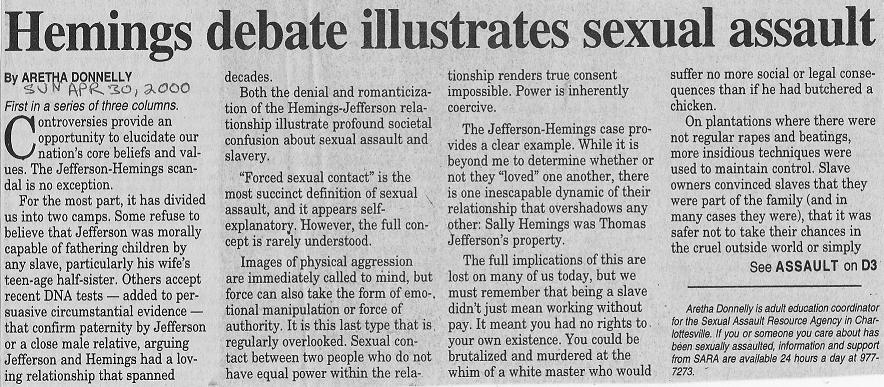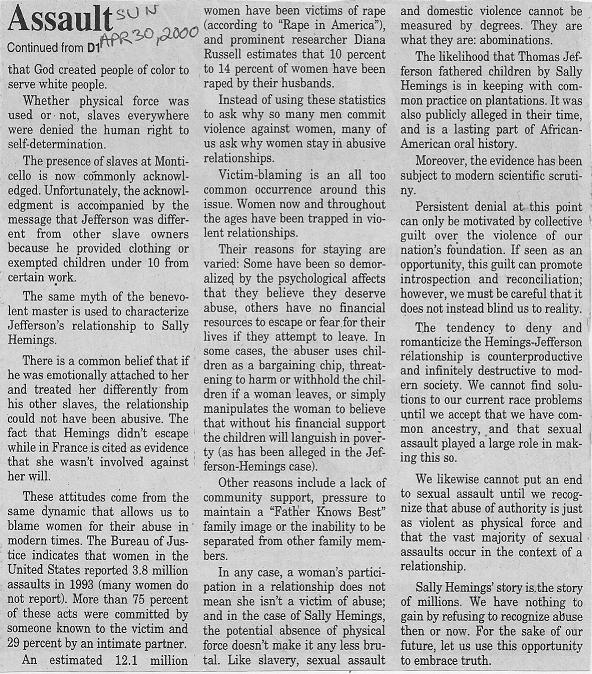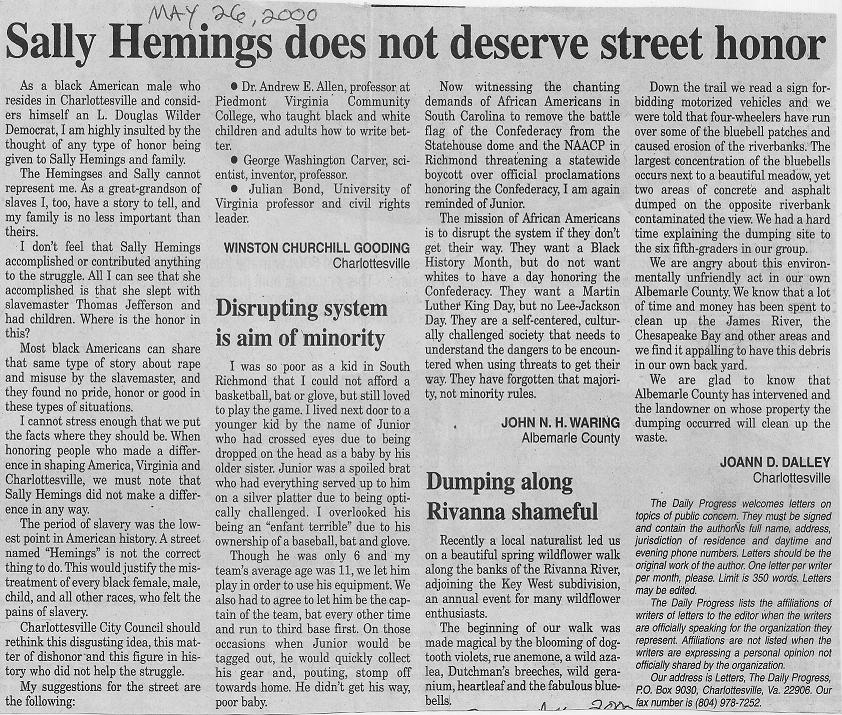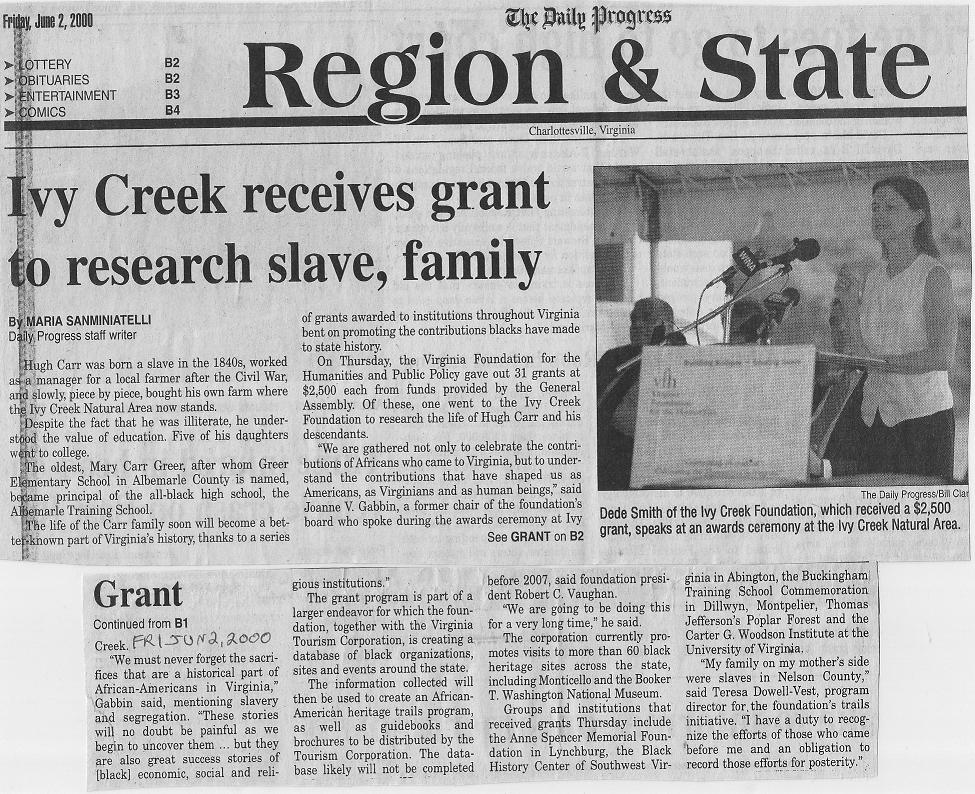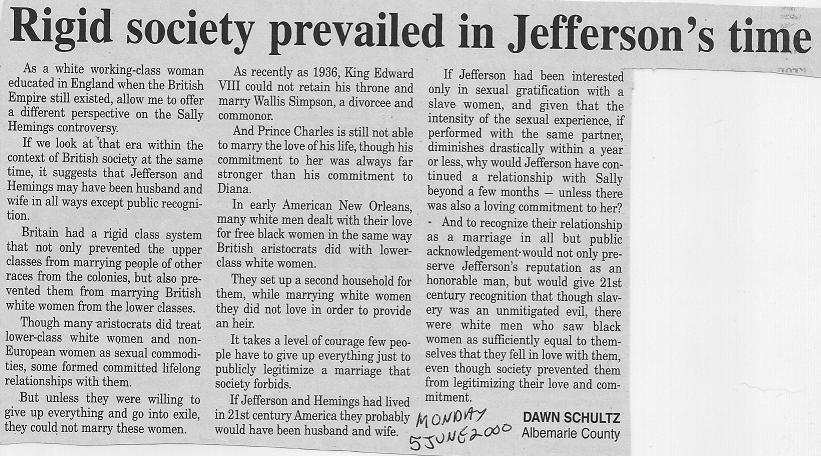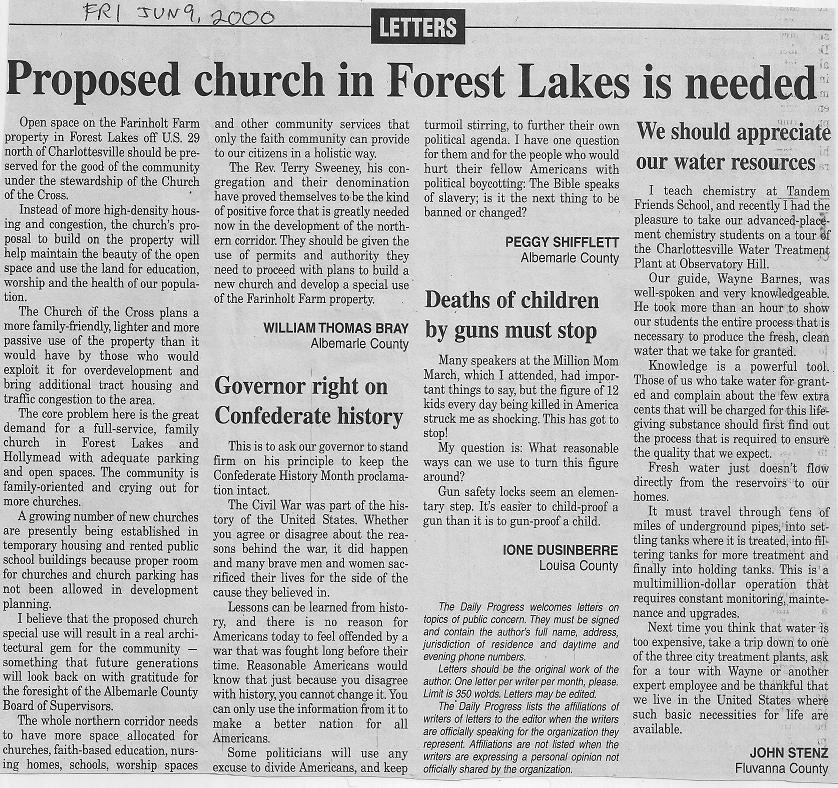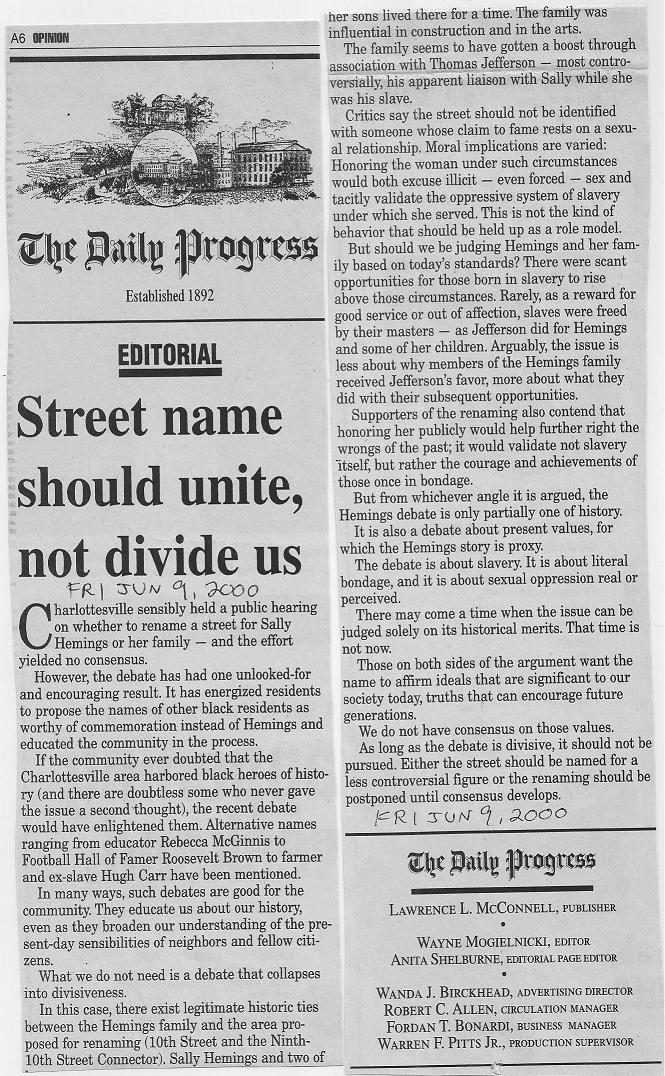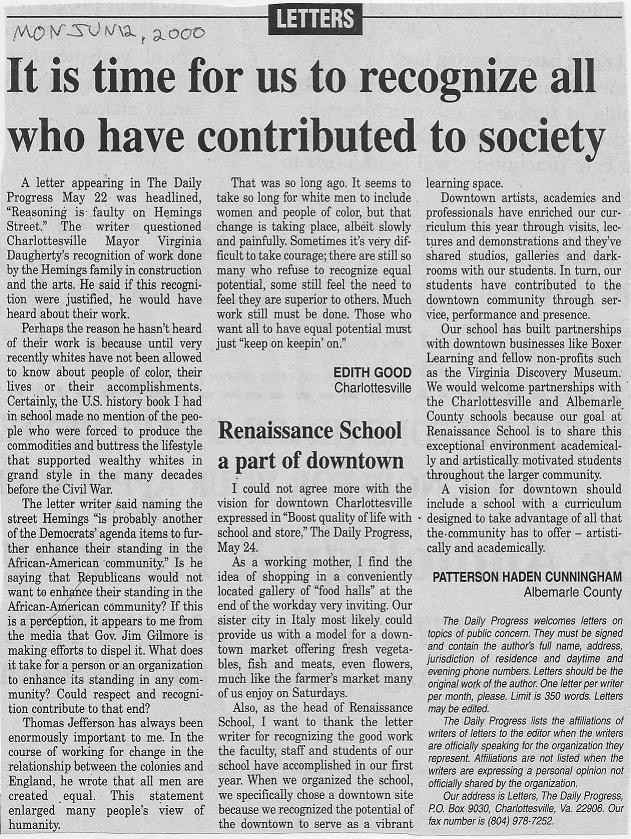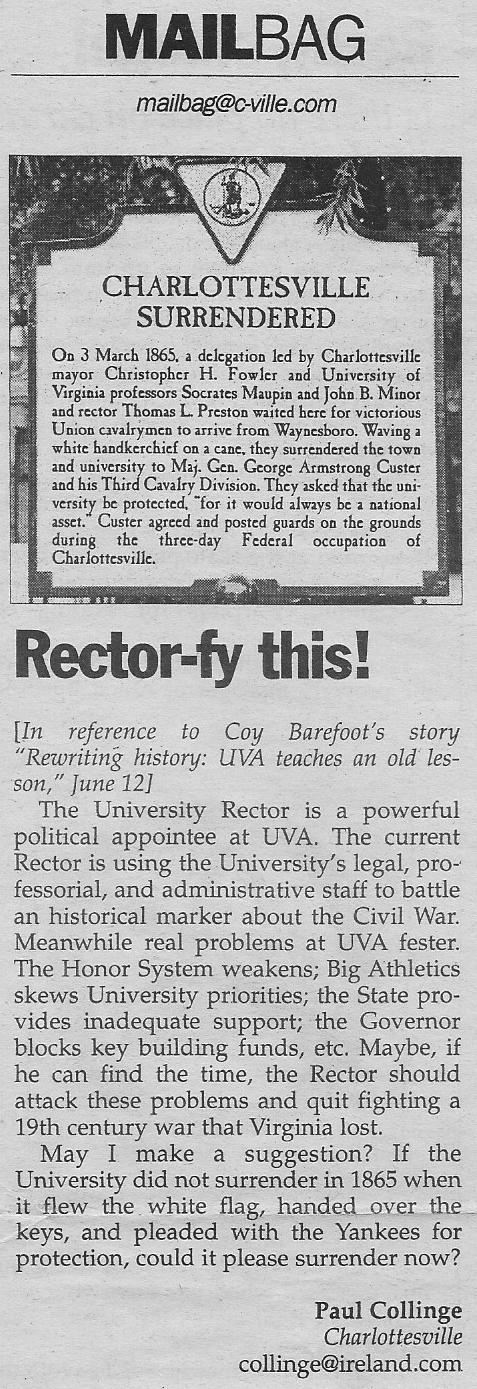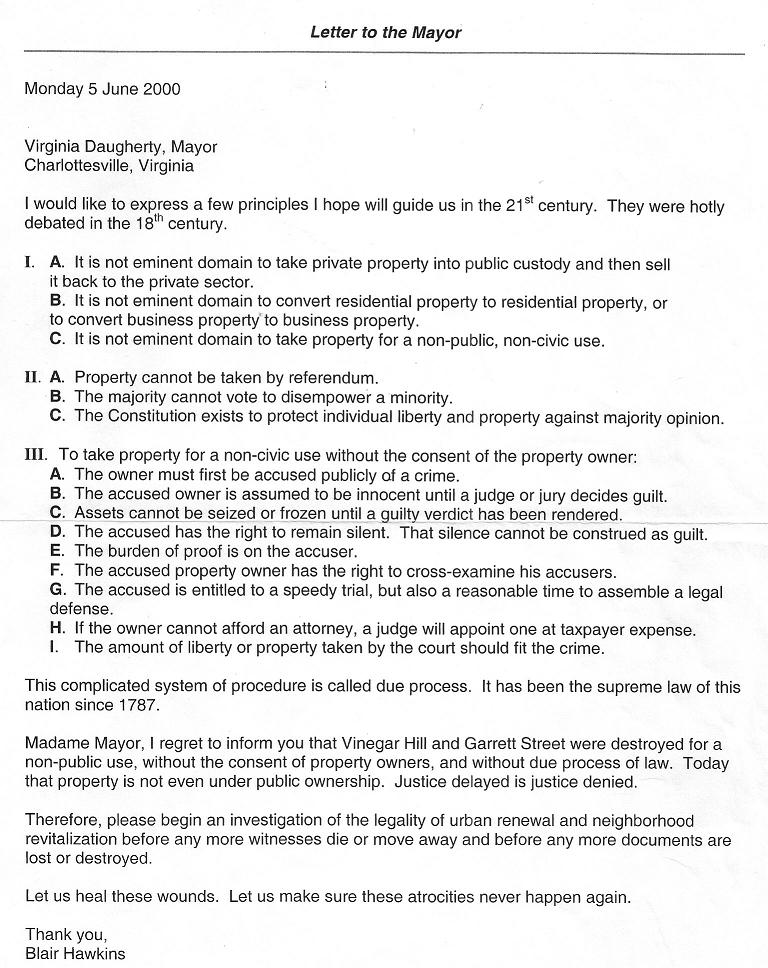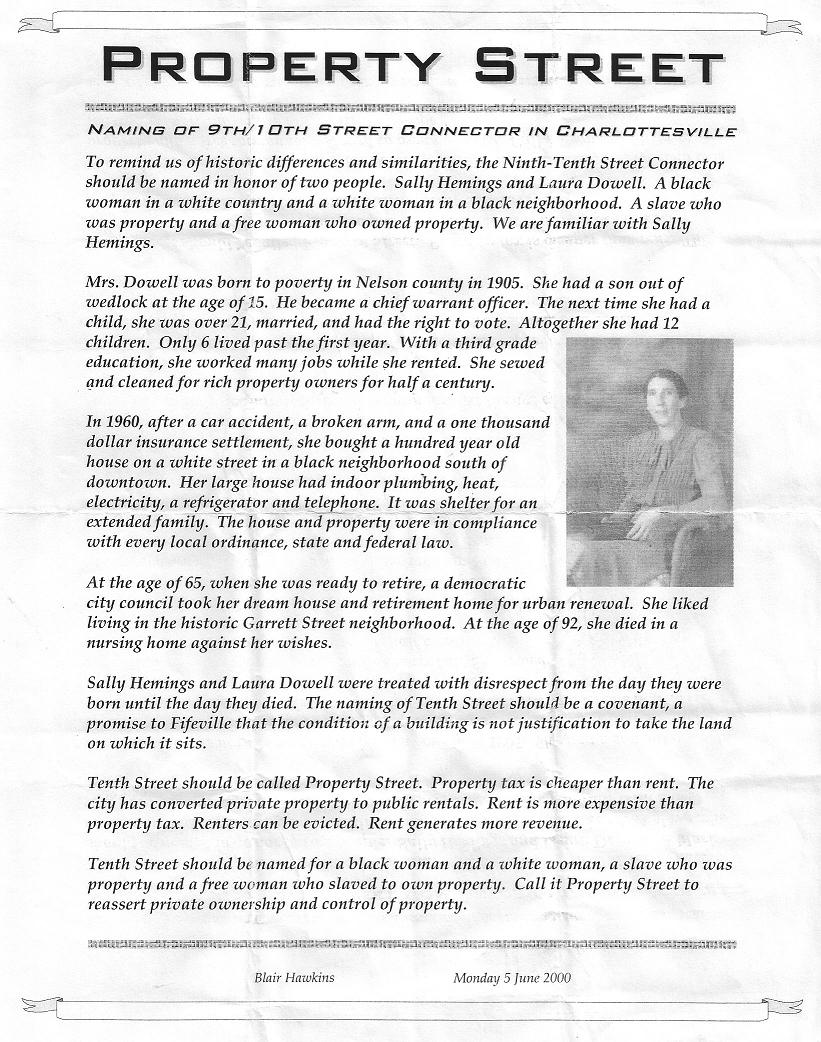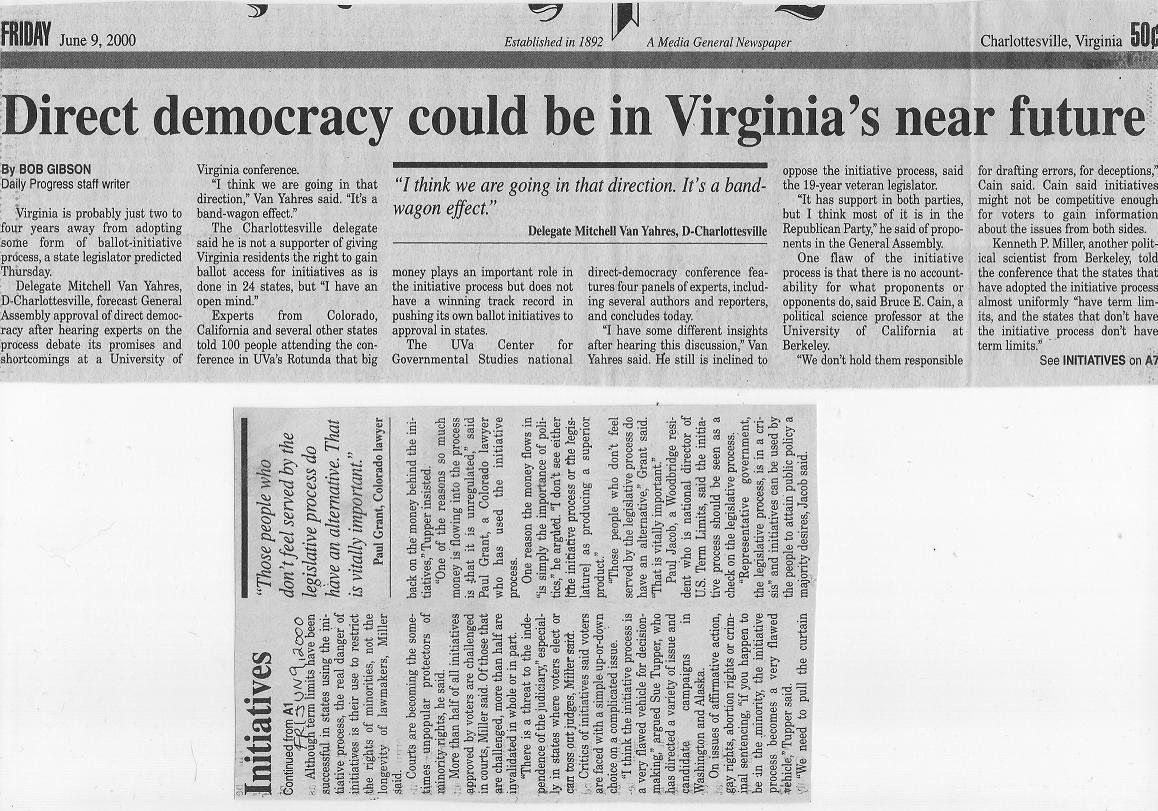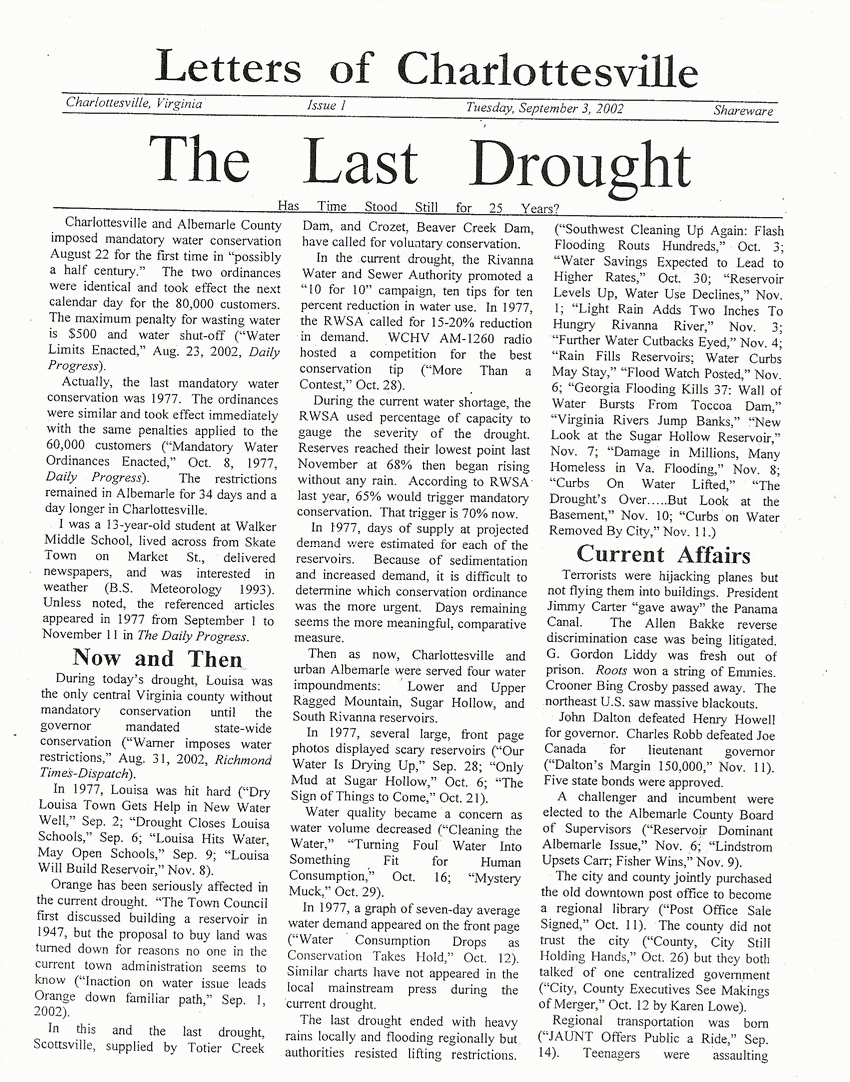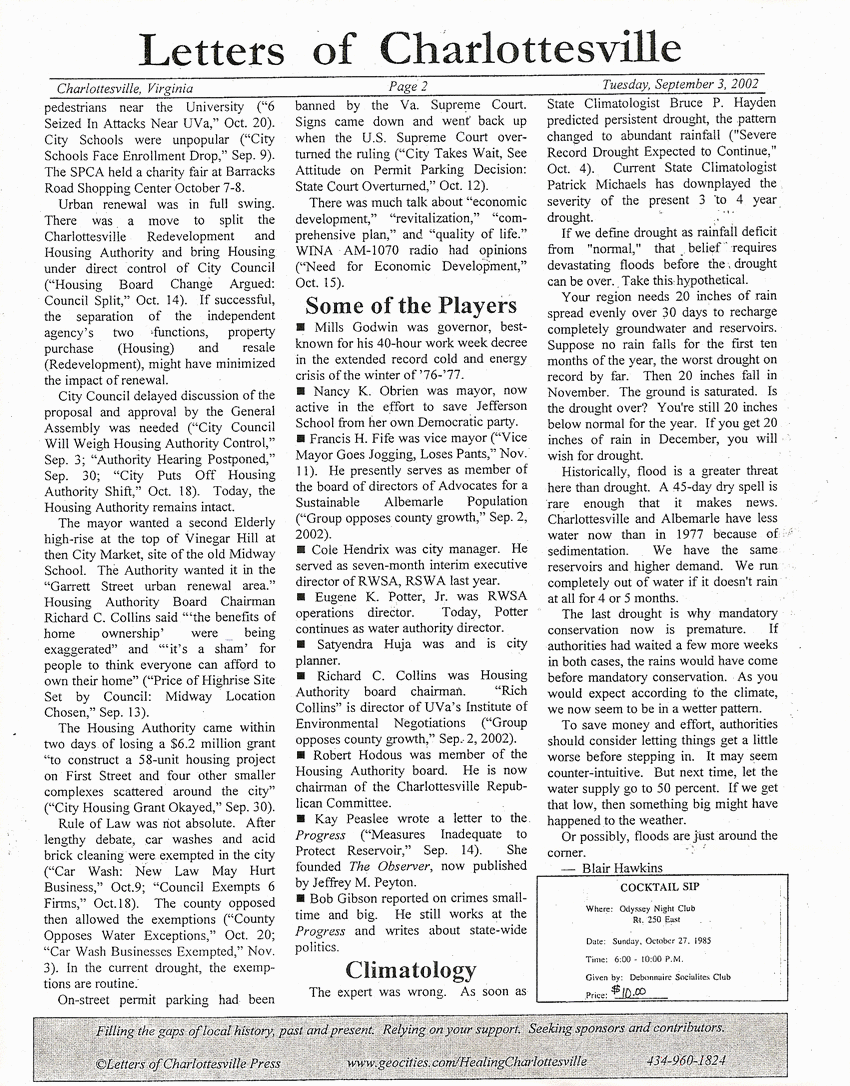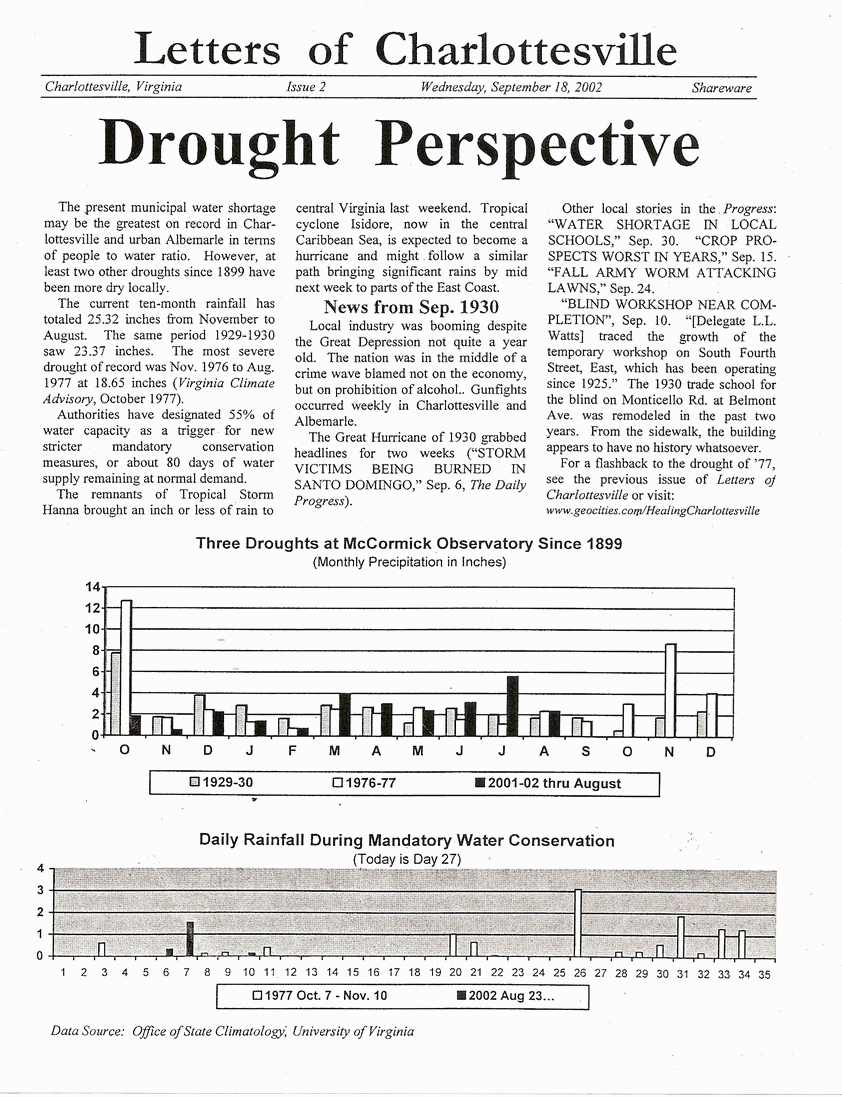 "Hemings Street" Leads To Confederate Monuments Removal. Saturday May 13, 2017.
"Hemings Street" Leads To Confederate Monuments Removal. Saturday May 13, 2017.
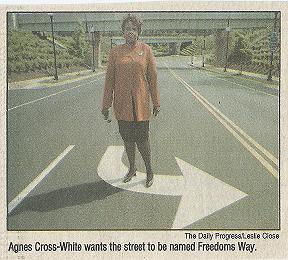 After generations of ongoing City programs to erase African-American history and demolish landmarks in the name of urban renewal and affordable housing, the desire to include more minority history in the public sphere was growing.
After generations of ongoing City programs to erase African-American history and demolish landmarks in the name of urban renewal and affordable housing, the desire to include more minority history in the public sphere was growing.
The inability to agree on what "black" history to honor has led to the current efforts to erase "white" history and the Civil War monuments. During this debate people warned that activists would not be satisfied with eliminating Lee-Jackson Day and Confederate History Month.
At the center of a street-naming controversy 17 years ago were 2 women. Sally Hemings and Agnes Cross-White.
Hemings was a slave and alleged concubine of Thomas Jefferson. 
 DNA tests in 1998 concluded that Jefferson, or a close relative, fathered Hemings' children. They lived near 10th Street and West Main, where the 9th-10th connector is located.
DNA tests in 1998 concluded that Jefferson, or a close relative, fathered Hemings' children. They lived near 10th Street and West Main, where the 9th-10th connector is located.
Agnes Cross-White inherited The Tribune, the local African-American conservative weekly since 1954. While some have called for recognizing the contributions of slaves, Cross-White didn't think being a sex slave was an achievement. She proposed the street be named "Freedom's Way," the opposite of slavery.
There were many proposals. They included a 100-signature petition for the football player from the Starr Hill neighborhood, Roosevelt Brown, whose name would eventually honor the street.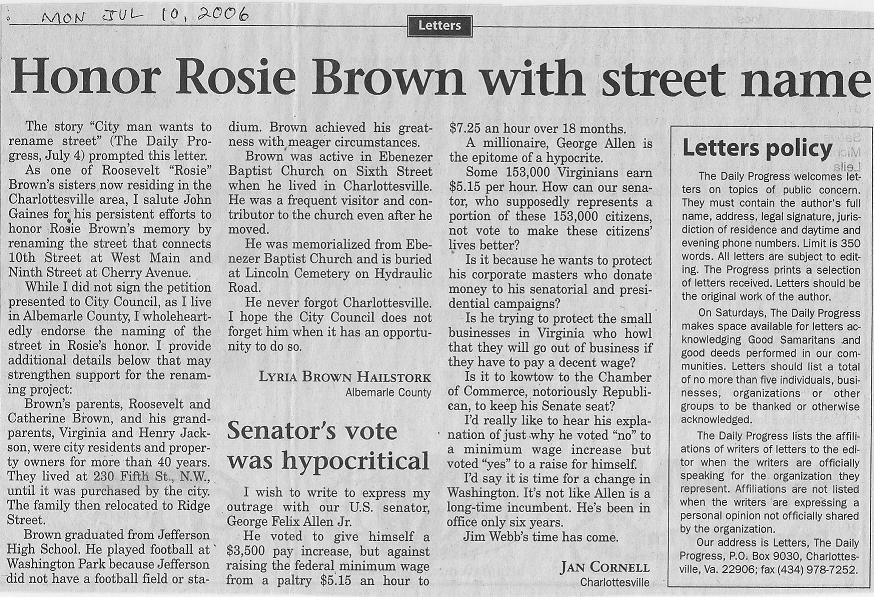
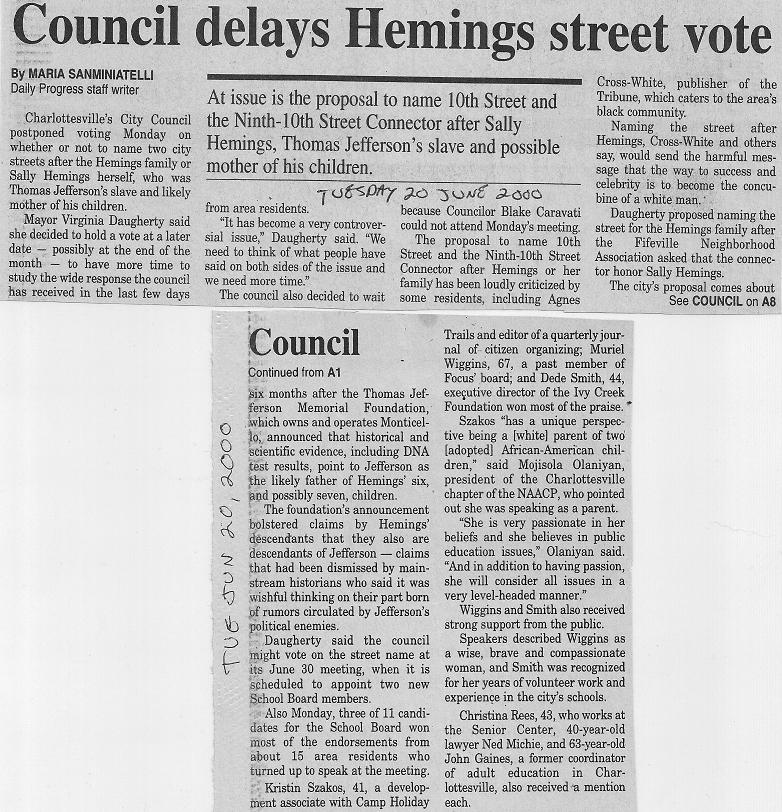 Other nominations were Martin Luther King Jr., Rebecca McGuinness, Hugh Carr, Mary Carr Greer, Booker T. Washington, George Washington Carver.
Other nominations were Martin Luther King Jr., Rebecca McGuinness, Hugh Carr, Mary Carr Greer, Booker T. Washington, George Washington Carver.
By so few local nominations, I could already see the loss of local history. The Golden Age of Race Relations 1865 to 1917. Nobody suggested Queen Charlotte, the City's namesake, said to be the black Queen of England, wife of King George III of the American Revolution.
Or John West, born into slavery, son of the Gibbons slaves of a professor, becomes wealthy land developer, develops Vinegar Hill, sells parcels to other blacks, Land = Civil Rights, age of prosperity and rise of black society and culture. 1875 Daughters Of Zion Cemetery for affluent blacks.
John West sold one of the parcels to become Stonewall Jackson Park at Court Square. He knew it was for a confederate monument. The 1909 Civil War Soldier didn't cause a problem. No one saw the end of the golden age approaching as the 1915 "Birth of a Nation" KKK film created a racial fervor that would sweep the nation, and change the meaning of the Jackson and Lee statues.
With national attention focused on Charlottesville, City Council delayed the vote until the next regular meeting. Then they delayed the vote again. The vote didn't happen later until the movement for Rosie Brown rose up again.
First Day Of Anti-Urban Renewal Campaign. Monday June 5, 2000.
Blair Hawkins, who had just run for City Council and shook things up, launched the campaign with 2 speeches. Hawkins hoped to get national or outside attention, a traditional technique of the public housing opposition.
The first speech was well-received in Matters by the Public. The "Letter to the Mayor to Investigate Urban Renewal" talked about the abstract principles of due process and eminent domain. Described at the time: "Upon completion of the speech, applause reverberated in a Council Chamber packed with black people. The mayor [Virginia Dougherty] has not spoken on the matter. Newspapers did not record the history."
The second speech in the Hemings public hearing talked about a specific example of local urban renewal. The street renaming should honor 2 people, "Sally Hemings and Laura Dowell, a black woman in a white country and a white woman in a black neighborhood, a slave who was property and a free woman who slaved to own property" (to have it stolen by City Council). Call it Property Street to reassert private ownership and control of real estate.
Only a half dozen in the audience applauded this speech. But the applause was "unequivocal," long enough to know it was intentional.
So the invisible Eminent Domain Campaign in Charlottesville was off and running. A major theme was loss of history. Within days of the Sally Hemings debate, news media illustrated how the history of referendums and ballot initiatives had been lost. As in the Dark Ages, the recorded history is preserved somewhere, but unavailable for the public to use in pondering the modern issues. Renaissance is when the lost knowledge is rediscovered.
"Direct Democracy Could Be In Virginia's Near Future." June 9, 2000. Story about the possibility of bringing ballot initiatives to Virginia. Sounds okay.
What about this headline? "Elections could be in Virginia's future." What? We have elections right now. The same is true with ballot initiatives. Every other election seems to have ballot referendums, from amending the state Constitution to approving bonds and borrowing.
You might say, yes, but they didn't originate from the voters. These referenda came from the legislature and submitted to the voters for approval.
What about the 2002 effort to put the Elected School Board on the ballot, and the successful effort in 2005? 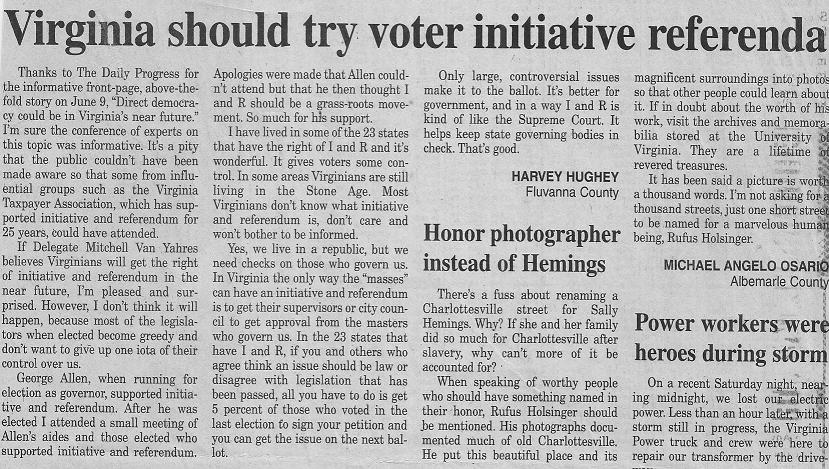
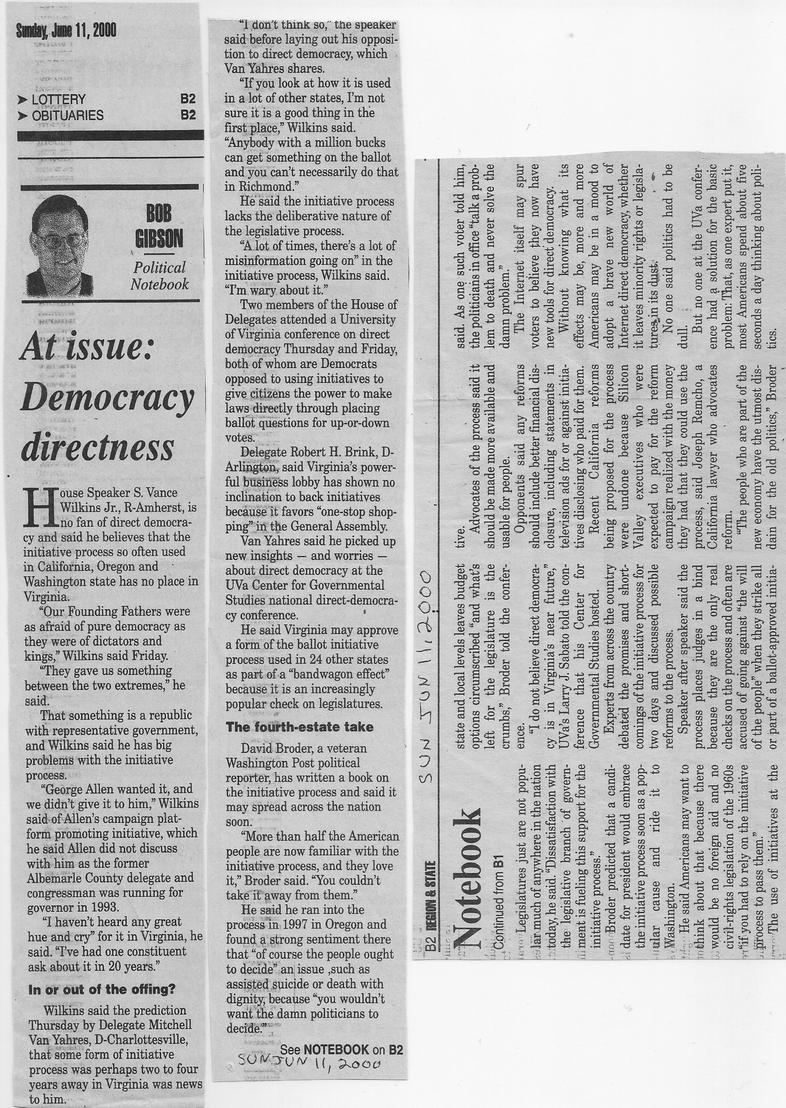 Was there any law changed after these articles to allow voter-initiated referendums? No. They've been allowed at least since a December 7, 1920 referendum approved the switch to At-Large City Council, also called direct democracy.
Was there any law changed after these articles to allow voter-initiated referendums? No. They've been allowed at least since a December 7, 1920 referendum approved the switch to At-Large City Council, also called direct democracy.
Wonder how the letter writers felt when they learned we actually already have direct democracy and referendums? Perhaps the reporters were fresh out of college and didn't know. Well, Bob Gibson has been reporting since the 1970s. He must have known about the 1981 County referendum to approve revenue sharing.
Quoted in the articles is the late Mitch Van Yahres, who was first elected to City Council in 1968. Surely he must have known about the Mother of all urban renewal referendums in 1967, the Triple Referendum which would grow 5-fold and become the Strategic Investment Area today, proving that urban renewal causes more urban renewal. Repeatedly stealing for public housing was put to a vote. Repeatedly stealing won (eminent domain to seize and sell real estate). Some said the money made us do it because grants were offered from HUD.
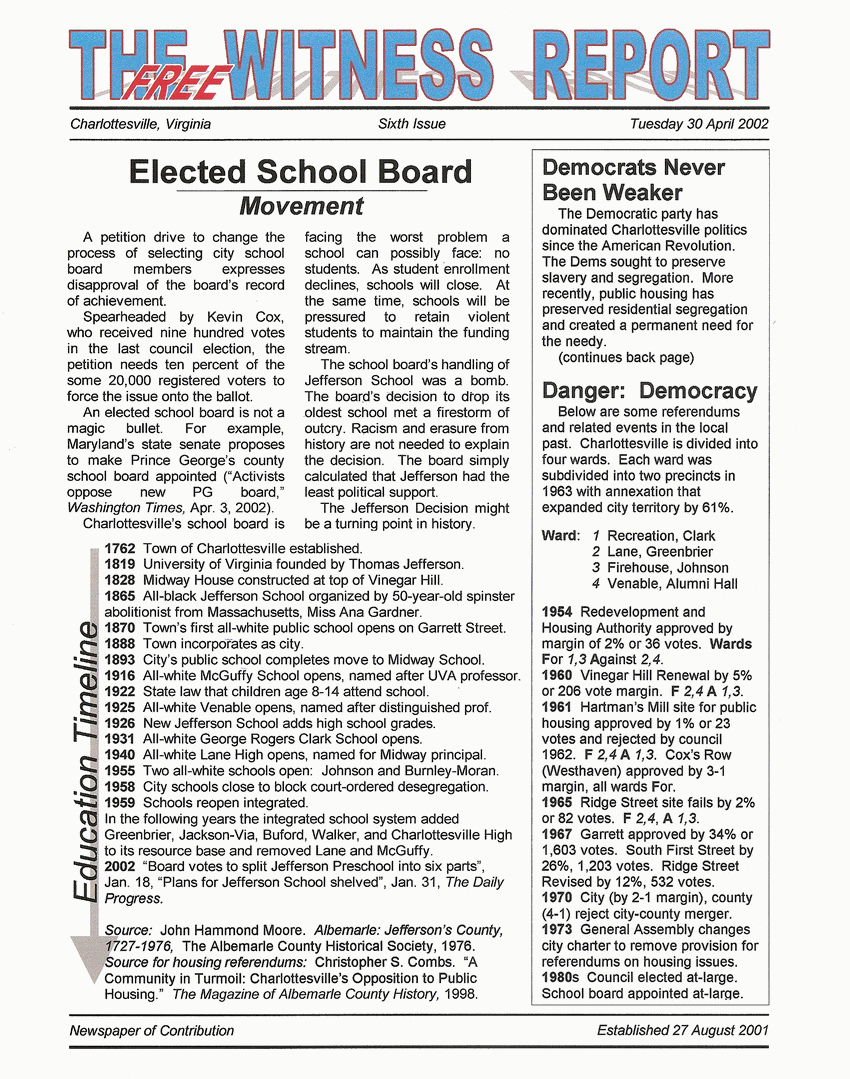 Today it's hard to know if it was fake news, intentionally concealing the history of public housing referendums,
Today it's hard to know if it was fake news, intentionally concealing the history of public housing referendums,  eventually stopped by the McCue Amendment. Or was it lazy reporting? Either way this was the tip of the iceberg.
eventually stopped by the McCue Amendment. Or was it lazy reporting? Either way this was the tip of the iceberg.
On Aug. 20, 2002 I had that letter in The Daily Progress explaining how urban renewal is why the Housing Authority is controversial. "Charlottesville has suffered a major break with its recent and distant past."
Three days later were mandatory water restrictions "for the first time in possibly a half century." After several dry years, no media outlet had researched that the City's first water restrictions and worst drought on record had occurred 25 years earlier in 1977.
Turns out the Chairman and Executive Director of the water authority had both been City officials during that drought. Rich Collins was chairman of the urban renewal commission. Cole Hendrix was City Manager. But they didn't tell anybody about the drought. They didn't want anyone to know their history as urban renewal officials. They denied their involvement in Garrett/ Ware Street urban renewal because Vinegar Hill urban renewal had occurred previous to these projects.
Urban Renewal, the public stealing of real estate mainly from the African-American community in exchange for public housing and redevelopment, is a hard truth to handle. It has caused the loss of history of things completely unrelated to land use... like the weather.
Blair Hawkins | Charlottesville, Virginia | healingcharlottesville@yahoo.com | Résumé | Top
